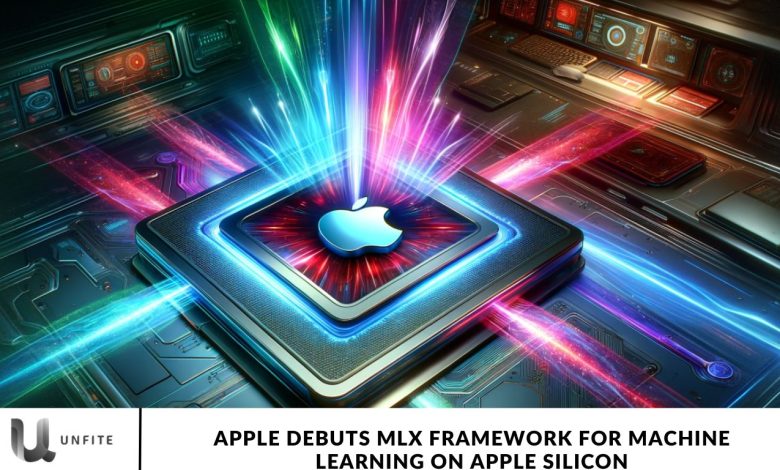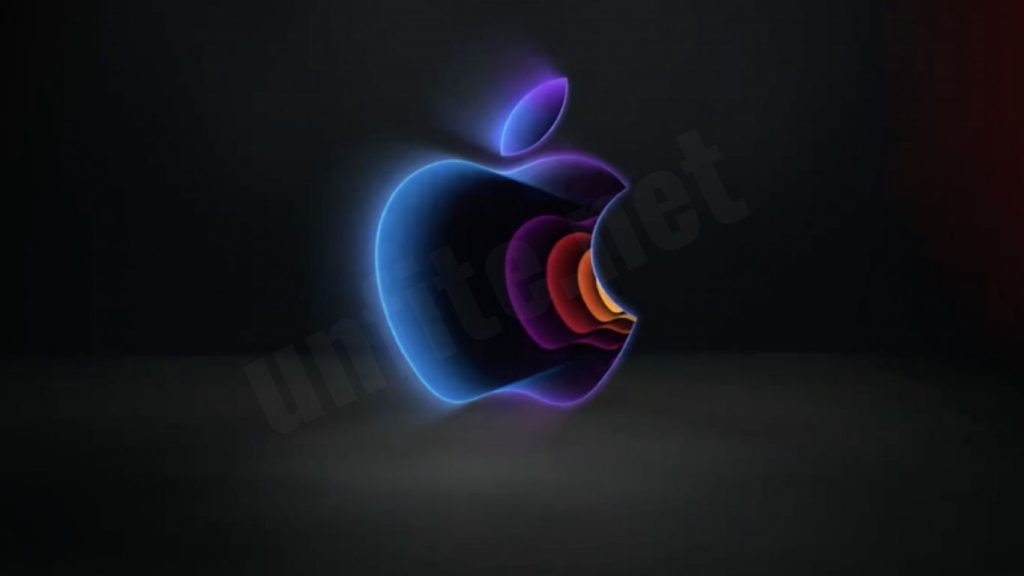Apple Debuts MLX Framework for Machine Learning on Apple Silicon

Apple has officially confirmed the release of its new MLX Framework, also known as ML Explore, specifically designed for machine learning (ML) on Apple Silicon-based computers. This framework is tailored to work with Macs equipped with M1, M2, and M3 series chips. The MLX Framework provides developers with tools to efficiently train and run machine learning models, optimizing performance on Apple Silicon. Essentially, it simplifies and accelerates ML tasks, taking full advantage of Apple’s M-series chip architecture, which is known for its advanced processing power and energy efficiency.
We will explore Apple’s release of the MLX Framework for Machine Learning on Apple Silicon and explain what this framework is and how it benefits users.
What is this MLX?
Apple has revealed that the MLX framework features a unified memory model. Additionally, the company demonstrated how this open-source framework can be used, enabling anyone interested in machine learning to run it on a laptop or desktop.
Details about the MLX framework have been shared on GitHub, the code-hosting platform. The information reveals that the MLX framework’s Python API closely mirrors the NumPy C++ API, a popular scientific computing library for Python.
How Is This Framework Helpful To Users?
Apple noted that end users can take advantage of higher-level packages to build and run more advanced machine-learning models on their devices. Previously, developers had to use an interpreter, such as CoreML, to convert and optimize their models.
While this process simplified training and running ML models, it has now been replaced by MLX. With MLX, users can directly train and execute their models on Apple Silicon-powered computers, enhancing both efficiency and performance.
The Framework Of MLX
Apple states that the MLX framework is inspired by widely used frameworks like PyTorch, ArrayFire, Jax, and NumPy. A notable aspect of MLX is its unified memory model, which allows operations on MLX arrays to be executed in shared memory. This means tasks can be performed on any supported device (currently, Apple supports both CPU and GPU) without the need for data copies.
Additionally, Apple has provided examples of MLX in action, specifically with Stable Diffusion image generation on Apple Silicon hardware. In performance tests, MLX demonstrated up to 40% greater throughput than PyTorch when generating batches of images in sizes of 6, 8, 12, and 16.
These tests were conducted on a Mac equipped with the M2 Ultra chip, Apple’s most powerful processor to date. While MLX can generate these image batches in approximately 90 seconds, PyTorch requires around 120 seconds for the same task.
What is the MLX Framework?

Definition of the MLX Framework
The MLX (Machine Learning Explore) framework is a cutting-edge machine learning toolkit developed by Apple, specifically tailored for its Apple Silicon architecture. It enables developers to create, train, and execute machine learning models directly on Macs powered by M1, M2, and M3 chips. By harnessing Apple Silicon’s specialized capabilities, MLX aims to optimize the performance and efficiency of machine learning tasks, making it easier for developers to integrate advanced AI solutions into their applications.
Key Features and Capabilities
Unified Memory Model:
- MLX employs a unified memory model, allowing operations on MLX arrays to be conducted in shared memory. This innovative design eliminates the need for data copies between CPU and GPU, leading to faster processing and reduced latency, especially for large datasets.
Compatibility with High-Level Packages:
- The framework is designed to work seamlessly with higher-level machine learning packages, enabling developers to build and run complex models with ease. This support simplifies the development process, reducing the learning curve for users who need to be more familiar with lower-level programming.
Python API Similarity:
- MLX’s Python API is intentionally designed to closely resemble the NumPy C++ API, a widely used library for scientific computing. This similarity facilitates a smooth transition for developers accustomed to Python, allowing them to leverage their existing skills when working with MLX.
Optimized Performance:
- The MLX framework is engineered to maximize Apple Silicon’s capabilities, offering significant performance enhancements. For instance, during tasks like image generation, MLX can achieve up to 40% greater throughput compared to traditional frameworks like PyTorch, showcasing its efficiency in real-world applications.
Open Source:
- As an open-source framework, MLX encourages community collaboration, allowing developers to contribute to its growth and improvement. This openness fosters innovation and provides users with access to a rich repository of resources, tools, and support.
How It Differs from Previous Apple Machine Learning Frameworks
Direct Execution on Apple Silicon:
- Unlike earlier frameworks, which often relied on interpreters like CoreML for model optimization, MLX allows users to directly train and execute machine learning models on Apple Silicon. This shift enhances speed and efficiency, streamlining the development workflow.
Enhanced Memory Management:
- The unified memory model of MLX provides a more efficient approach to memory management than previous frameworks. This advancement minimizes the need for manual data copying and management, resulting in improved performance, particularly for memory-intensive applications.
Greater Flexibility with Higher-Level Packages:
- Previous Apple machine learning frameworks had limitations in integrating with high-level packages, which could constrain developers. In contrast, MLX’s compatibility with such packages offers greater flexibility, allowing for more robust model development.
User-Centric Design:
- MLX emphasizes ease of use and accessibility, making it suitable for developers of varying skill levels. This focus on user experience contrasts with earlier frameworks that could be more complex and challenging for newcomers, thereby expanding the potential user base.
Advantages of MLX for Apple Silicon
Unified Memory Model
Explanation of the Unified Memory Model and Its Significance
The unified memory model is a significant innovation in memory management that allows both the CPU and GPU to access a single shared memory space. This model is particularly beneficial for machine learning applications, where data needs to be frequently accessed and processed by both processors.
In traditional computing architectures, the CPU and GPU each have their separate memory pools. This means that data often has to be copied back and forth between the two, which can introduce latency and slow down processing times. The unified memory model eliminates this need for data transfer by allowing both the CPU and GPU to operate on the same data in the same memory space.
The significance of this model includes:
Efficiency: The unified memory model improves the efficiency of data processing by enabling shared access to memory, allowing for faster computations and reduced overhead in managing memory transfers.
Performance Optimization: This model is tailored to optimize performance on Apple Silicon chips, making it particularly effective for applications that require heavy computation, such as machine learning.
Developer-Friendly: It simplifies the programming model for developers, reducing the complexity involved in managing memory allocations and transfers. This leads to cleaner, more maintainable code.
Benefits of Shared Memory Operations on Performance

Reduced Latency:
With shared memory operations, data can be accessed directly by both processors without needing to be copied between separate memory pools. This significantly decreases the time taken to retrieve and process data, resulting in quicker execution of machine learning algorithms.
Increased Throughput:
The unified memory model enhances throughput by allowing simultaneous operations on the same data by both the CPU and GPU. This means that more computations can be processed in parallel, leading to better hardware utilization and overall improved performance.
Simplified Development:
Developers no longer need to write complex code to handle memory transfers. This reduction in complexity not only makes the development process more straightforward but also minimizes the potential for errors related to data management.
Improved Performance Scaling:
For applications that require large datasets, the unified memory model ensures that performance scales effectively. As the dataset grows, the efficiency of memory operations helps maintain high-performance levels, which is crucial for deep learning and other resource-intensive tasks.
Compatibility with High-Level Packages
Overview of Higher-Level Packages Available for Users
The MLX framework is compatible with several high-level machine learning libraries, which provide a variety of tools and functions to facilitate model development. Some notable packages include:
- TensorFlow: An open-source library designed for machine learning and deep learning, providing a flexible platform for building and training models.
- Keras: A high-level API that runs on top of TensorFlow, making it easier for developers to build neural networks and experiment with different architectures.
- PyTorch: A popular machine learning framework known for its flexibility and ease of use, particularly in research and prototyping.
- Scikit-learn: A library that offers simple and efficient tools for data mining and analysis, making it ideal for traditional machine learning tasks.
These packages empower developers to leverage the MLX framework’s performance benefits while utilizing familiar tools.
How These Packages Simplify the Development of Complex Models
Abstraction of Complexity:
- High-level packages abstract much of the underlying complexity of machine learning algorithms. This means developers can focus on building models without needing to understand every detail of the algorithms or data processing techniques involved.
Rapid Prototyping:
- These packages facilitate rapid prototyping by providing pre-built functions and modules. Developers can quickly test various algorithms and model configurations, which accelerates the development process and allows for faster iterations.
Built-in Functions and Utilities:
- Many high-level libraries include built-in functions for everyday tasks such as data preprocessing, model evaluation, and hyperparameter tuning. This functionality saves developers time and reduces the amount of code they need to write, allowing them to concentrate on more critical tasks.
Community Support and Resources:
- High-level packages often include extensive community support, documentation, and tutorials. This wealth of resources helps developers troubleshoot issues, learn best practices, and find solutions quickly, easing the development process.
Seamless Integration:
- MLX’sMLX’s compatibility with these packages allows developers to incorporate them into their workflows easily. This integration enhances the overall machine-learning pipeline, enabling users to benefit from the performance improvements of the unified memory model while still utilizing high-level abstractions for model development.
Frequently Asked Question
What is the MLX framework introduced by Apple?
The MLX framework is Apple’s latest machine learning infrastructure designed to enhance the training and execution of machine learning models on Apple Silicon devices like the M1, M2, and M3 chips. It optimizes performance by leveraging Apple’s unified memory model and is fully open-source.
How does the MLX framework differ from Core ML?
MLX offers direct training and execution of machine learning models on Apple Silicon without needing intermediaries like Core ML. Core ML primarily serves as an interpreter, whereas MLX allows for native execution, enabling more efficient and faster performance.
Which Apple devices support the MLX framework?
MLX is designed for Macs powered by Apple Silicon chips, specifically the M1, M2, and M3 series processors. It fully exploits the unified memory architecture these chips offer.
Is MLX compatible with popular machine-learning libraries?
Yes, MLX integrates seamlessly with high-level machine learning libraries like PyTorch, NumPy, Jax, and ArrayFire. This compatibility simplifies the transition for developers familiar with these frameworks, allowing them to utilize MLX’s performance optimizations.
What is the significance of the unified memory model in MLX?
The unified memory model enables the CPU and GPU to share the same memory pool, reducing latency and eliminating the need for data copying between devices. This leads to significant performance gains, especially in high-computation tasks like deep learning.
How does MLX improve machine learning performance on Apple Silicon?
By allowing both CPU and GPU to process machine learning tasks simultaneously in shared memory, MLX significantly reduces processing time. For instance, it achieves up to 40% higher throughput in tasks like image generation compared to PyTorch on the same hardware.
Is MLX open-source, and where can developers access it?
Yes, MLX is an open-source framework. Developers can access the source code and documentation on GitHub, making it easier to contribute to or customize the framework based on specific machine learning needs.
What types of machine learning models can be run on MLX?
MLX supports a wide range of machine learning models, including neural networks, regression models, and classification algorithms. It is optimized for complex models requiring substantial computational resources.
Conclusion
Apple’s debut of the MLX framework marks a significant advancement in the landscape of machine learning, particularly for users of Apple Silicon. By leveraging the unified memory model, MLX enables more efficient data processing and computation, allowing developers to train and execute machine learning models directly on M1, M2, and M3 chips. This framework not only streamlines the development process by providing compatibility with popular machine-learning libraries but also enhances performance with reduced latency and improved throughput.
As an open-source initiative, MLX invites collaboration and innovation from the developer community, promising to evolve further as more users explore its capabilities. With its user-friendly design and robust functionality, the MLX framework positions itself as a powerful tool for researchers, data scientists, and developers alike, facilitating the creation of complex machine-learning models and applications. Overall, Apple’s commitment to enhancing machine learning on its devices reinforces its position as a leader in the tech industry, empowering users to harness the full potential of artificial intelligence in their projects.




